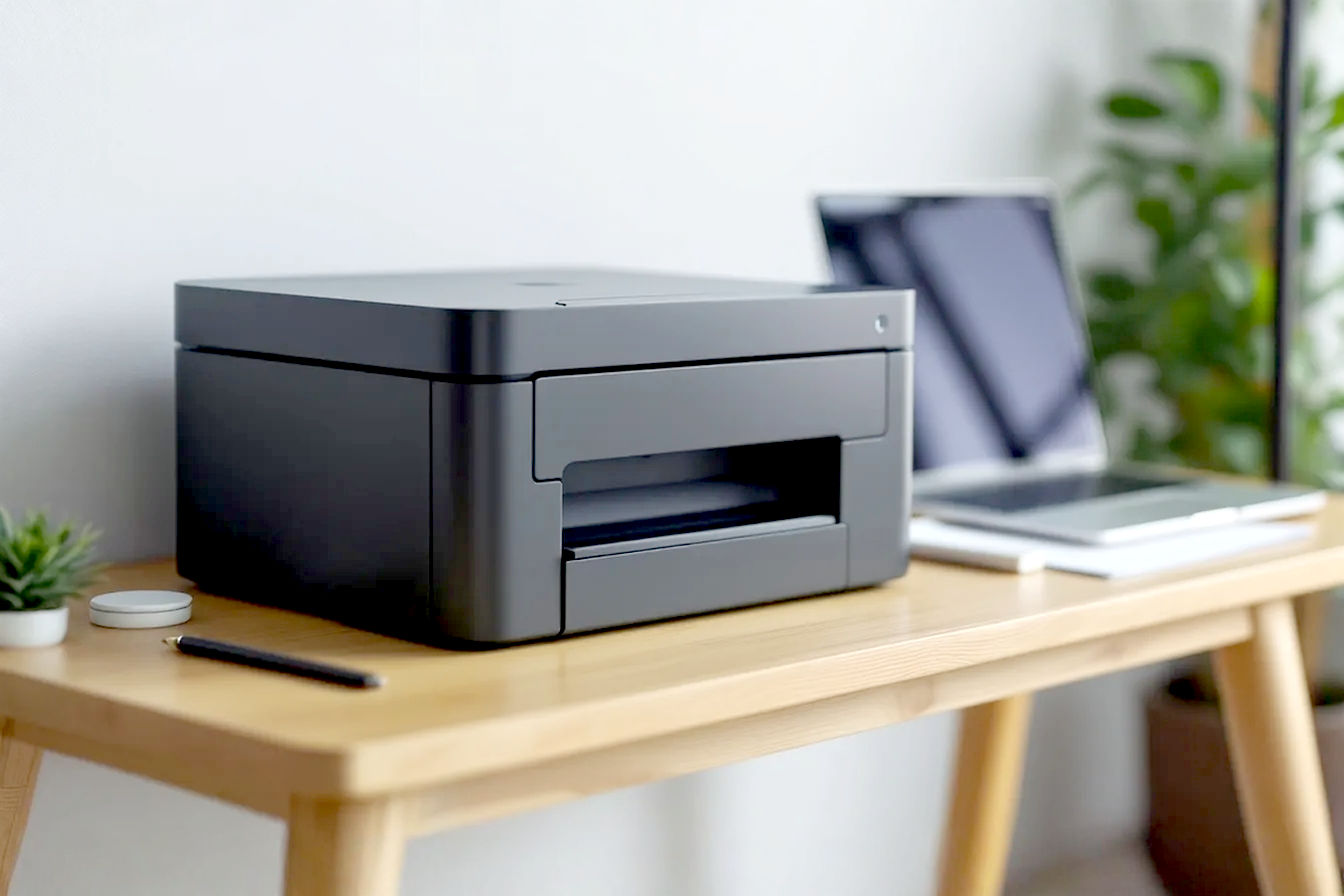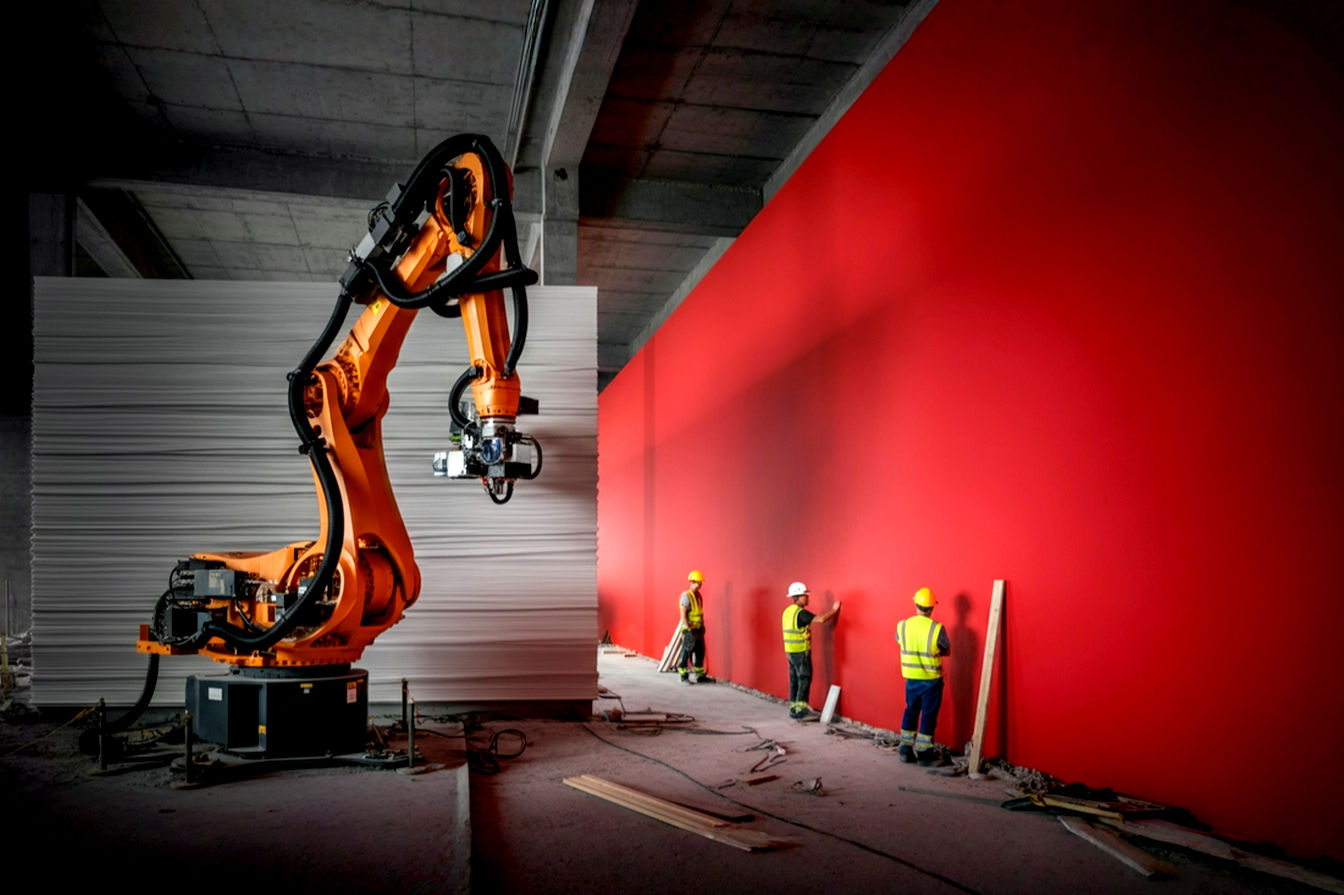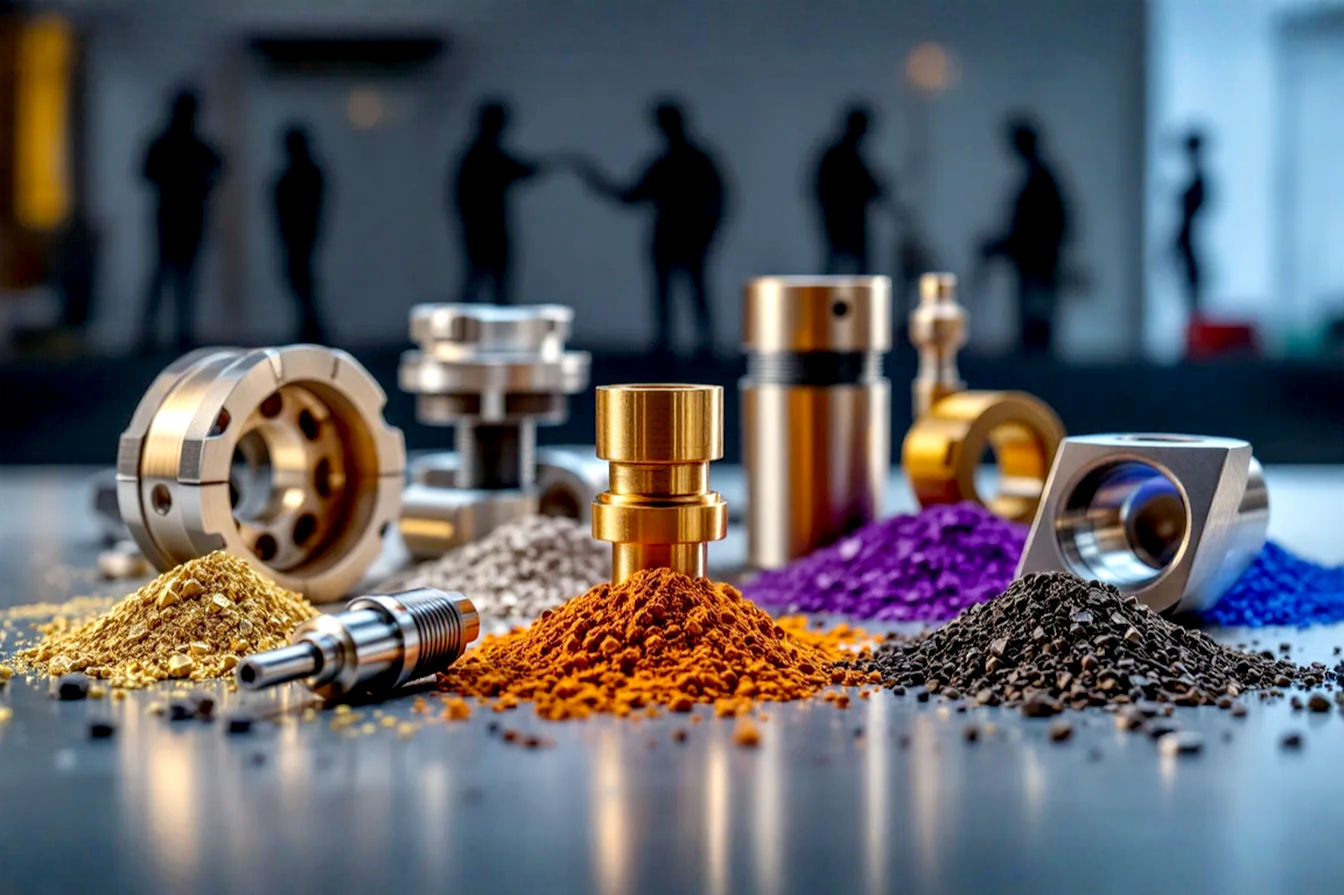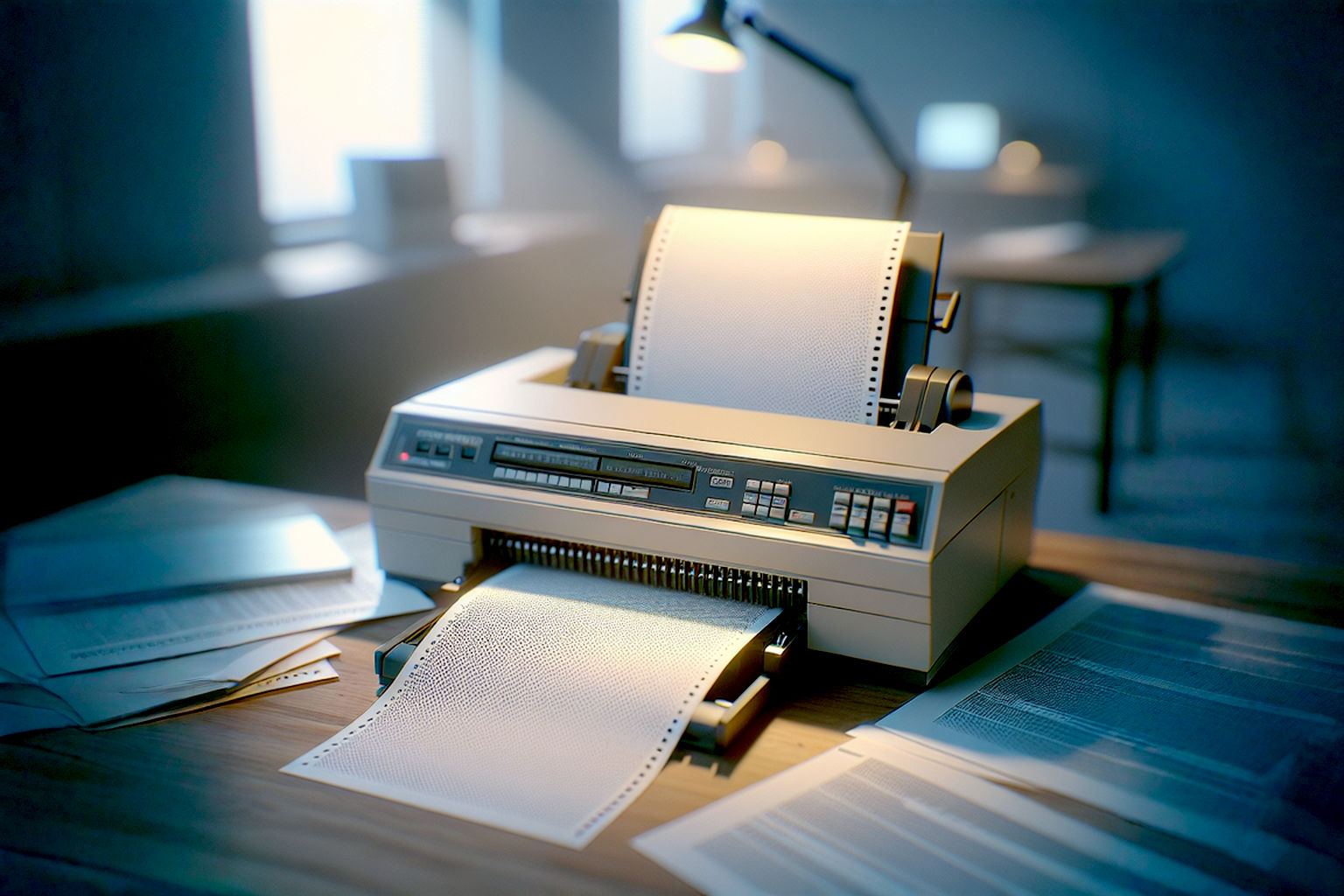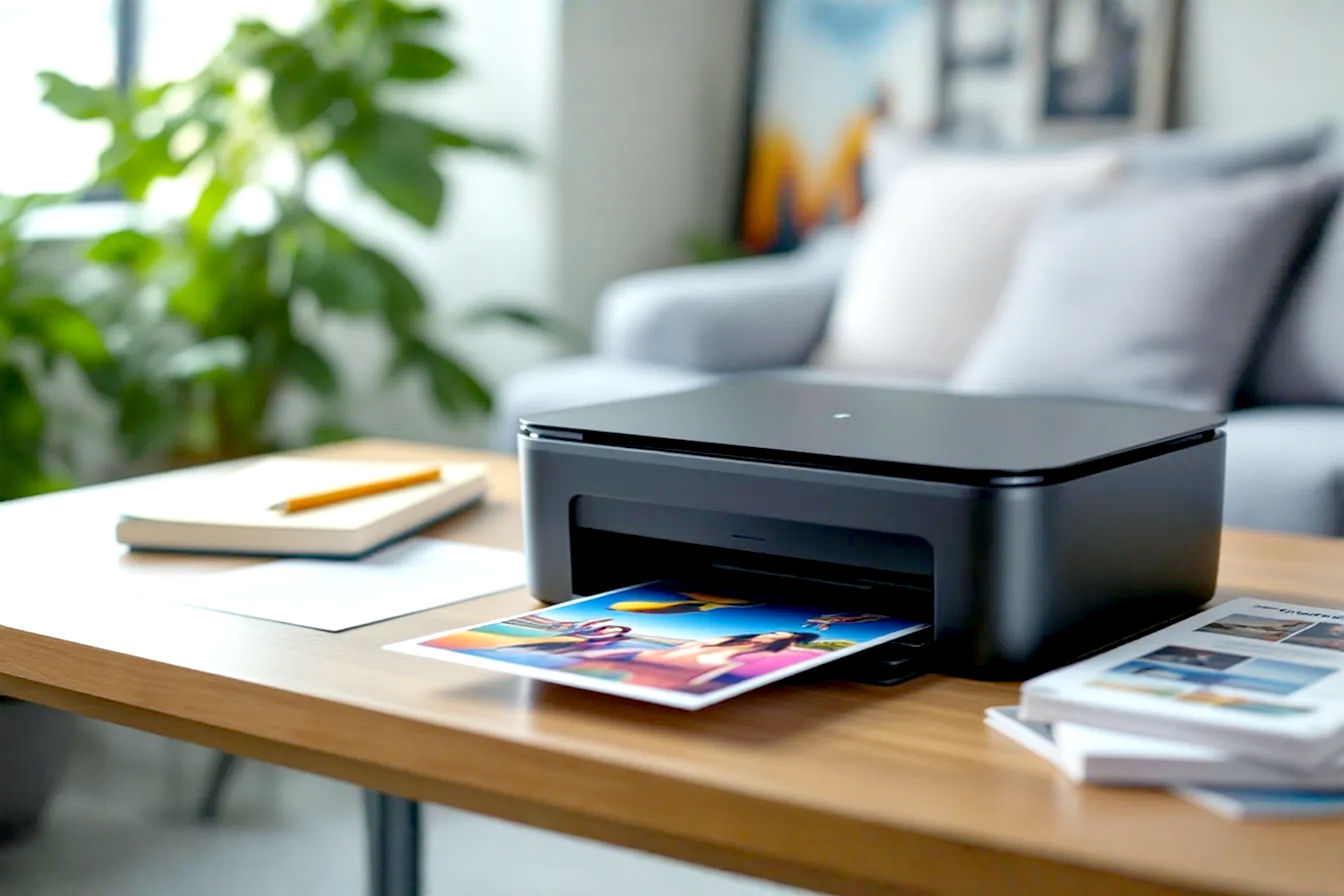This post may contain affiliate links. If you make a purchase through these links, we may earn a commission at no additional cost to you.
Thinking about improving your 3D printing game? Maybe your current machine isn’t quite hitting the mark anymore, or you’ve seen some amazing prints online and wonder how they do it. This often leads to a big question: Should you upgrade your existing 3D printer, or is it time to buy a brand new one? It’s a common dilemma for makers, whether you’re just starting out or have been printing for years.
Deciding whether to tweak your trusty machine or invest in a shiny new model isn’t always easy. Both paths have their pros and cons, and the right choice really depends on your specific situation, what you want to achieve, and your budget. This guide will walk you through the factors you need to consider. We’ll look at popular upgrades, when they make sense, and when the cost and effort might point you toward a new purchase. We’ll also dive into what features are most important if you do decide to buy a new printer. By the end, you’ll have a much clearer idea of the best path forward for your 3D printing journey.
The Upgrade Dilemma: When to Fix, When to Replace
Every 3D printer, no matter how good, has its limits. As you gain experience or your project needs change, you might find yourself wishing your printer could do more. This feeling often sparks the thought of an “upgrade.” But what does that really mean? It could be anything from adding a simple fan to replacing major components.
Why Consider Upgrading?
Upgrading your current 3D printer is often appealing because it seems like the less expensive option. You already own the machine, so you’re just adding to it or swapping out parts. The primary reasons people consider upgrading are:
- Improving print quality: Maybe you’re getting visible layer lines, inconsistent extrusion, or poor overhangs. Upgrades can often tighten tolerances and improve precision.
- Increasing speed: Waiting hours or even days for a print can be frustrating. Certain modifications can allow your printer to move and extrude faster without sacrificing quality.
- Boosting reliability: Tired of failed prints, clogs, or bed adhesion issues? Some upgrades specifically target these common problems, making your printer more dependable.
- Expanding material capabilities: Many entry-level printers are limited to basic filaments like PLA. Upgrading components like the hotend can unlock the ability to print with more advanced materials that require higher temperatures.
Think of upgrading like tuning up a car. You can replace parts to make it run smoother, faster, or handle better. It’s a way to extend the life of your current investment and tailor it to your specific needs.
Why Consider Buying New?
While upgrading is great for targeted improvements, sometimes your printer’s limitations are more fundamental. There are situations where pouring money and time into upgrades just doesn’t make sense. Reasons to consider buying a new printer include:
- Outdated technology: 3D printing technology advances quickly. Older printers might lack features now considered standard, like 32-bit mainboards, silent stepper drivers, or advanced auto bed leveling. Trying to add these can be complex or impossible.
- Significant limitations: Perhaps your build volume is too small for the parts you now want to print. Or maybe the printer’s basic design (like a wobbly frame) inherently limits its precision, and no amount of upgrading can fix that.
- Cost of upgrades vs. new: Sometimes, the total cost of the upgrades you want or need adds up to be close to, or even more than, the price of a modern, feature-rich new printer.
- Complexity of upgrades: Some upgrades require significant technical skill, firmware modification, and troubleshooting. If you’re not comfortable with this, a new printer that has these features built-in might be a better choice.
Buying a new printer is like getting a new car. You start fresh with the latest features, better overall performance, and a warranty. It can be a simpler path to achieving your goals if your current machine is holding you back in significant ways.
Assessing Your Current Printer’s Limitations
Before you decide, take a good look at your current printer. What are its biggest weaknesses? What problems are you trying to solve?
- Print Quality Issues: Are prints rough, inconsistent, or lacking detail? This might point to issues with the extruder, hotend, cooling, or frame rigidity.
- Speed Issues: Does printing take too long even for simple parts? This could be related to the mainboard’s processing speed, stepper drivers, or hotend’s melt rate.
- Reliability Issues: Are you constantly dealing with clogs, bed adhesion failures, or mechanical problems? The hotend, extruder, build surface, or leveling system might be the culprits.
- Material Issues: Can’t print with stronger or more temperature-resistant filaments? Your hotend or lack of an enclosure could be the limitation.
- Size Issues: Is the build area too small for your projects? This is a fundamental limitation that usually cannot be upgraded.
Be honest about what’s holding you back. This assessment is crucial for deciding whether specific upgrades can fix the problem or if you need a machine with different core capabilities.
Setting Goals for Your “Upgrade”
What do you hope to achieve? Do you want slightly cleaner prints, or do you need to print engineering-grade materials for functional parts? Are you looking to cut print times in half, or just make the printer a bit quieter?
Clearly defining your goals will help you evaluate whether an upgrade path is viable or if a new printer is necessary. If your goal is a much larger build volume, for instance, upgrading is likely not an option – you’ll need a new machine designed for that. If your goal is simply quieter operation, upgrading the stepper drivers might be a cost-effective solution.
Knowing your goals makes the decision process much simpler. It helps you filter out unnecessary options and focus on what will truly make a difference for your specific needs.
Common 3D Printer Upgrades and Their Impact (Focus on FDM)
Most desktop 3D printers use Fused Deposition Modeling (FDM) technology, which works by melting plastic filament and laying it down layer by layer. This section will focus on common upgrades for FDM printers and how they can improve performance.
Improving Print Quality
Achieving smooth, accurate prints is a primary goal for many makers. Several upgrades can significantly impact the final look and dimensional accuracy of your parts.
Hotend and Extruder Upgrades
The hotend melts the filament, and the extruder pushes it through the hotend’s nozzle. These two components work together and are critical for consistent material flow, which directly affects print quality.
- All-Metal Hotends: Many entry-level printers use hotends with a PTFE tube that goes all the way down to the nozzle. PTFE (Polytetrafluoroethylene) is a type of plastic. While this works for lower-temperature filaments like PLA, PTFE degrades at temperatures above 240°C (around 464°F). An all-metal hotend replaces the PTFE tube in the heat break (the transition zone between the cold and hot parts of the hotend) with a metal tube, often made of titanium or stainless steel. This allows you to safely print at much higher temperatures, enabling the use of materials like ABS, Nylon, and Polycarbonate, which require temperatures up to 260-300°C (500-572°F) or even higher. The technical benefit is a more consistent melt zone at higher temperatures, reducing the risk of clogs with high-temp filaments.
- Direct Drive vs. Bowden Extruders: This refers to where the extruder motor is located.
- Bowden Setup: The extruder motor is mounted on the printer’s frame, and a long PTFE tube connects it to the hotend on the print head. This keeps the weight off the print head, allowing for faster movements and potentially less ghosting (vibrations showing on the print surface). However, the flexible tube can introduce lag and makes printing flexible filaments like TPU more difficult due to the filament potentially buckling in the tube.
- Direct Drive Setup: The extruder motor is mounted directly on the print head, right above the hotend. This provides much better control over filament flow, especially for flexible filaments, as the distance the filament needs to travel is minimal. It also generally results in better retraction (pulling filament back to prevent stringing). The trade-off is increased weight on the print head, which can lead to more vibrations and ghosting if the printer’s frame isn’t rigid or if print speeds are too high. Upgrading from Bowden to direct drive can drastically improve flexible filament printing and retraction performance.
Bed Adhesion
Getting prints to stick reliably to the print bed is fundamental. Poor bed adhesion leads to warped corners or prints detaching mid-print.
- Heated Beds: Most modern FDM printers have heated beds, but older or very basic models might not. Heating the bed helps materials like ABS and PETG stick better and reduces warping by keeping the plastic warm as it’s deposited. If your printer lacks a heated bed, adding one is a significant upgrade that expands material options and improves reliability.
- Build Surfaces: The material on top of the heated bed is also crucial. Common surfaces include:
- Glass: Provides a very flat surface and can give the bottom of prints a smooth, glossy finish. Often used with adhesives like glue stick or hairspray for better adhesion.
- PEI (Polyetherimide): A popular plastic sheet known for excellent adhesion with many filament types, especially PLA and PETG, often without needing extra adhesives. Available as rigid sheets or flexible magnetic sheets.
- Flexible Magnetic Plates: A system where a magnetic base is attached to the heated bed, and a flexible steel sheet (often coated with PEI) magnetically attaches to the base. This makes removing prints incredibly easy – you just flex the sheet, and the print pops off. This is a major quality-of-life upgrade that also offers good adhesion depending on the surface coating.
Auto Bed Leveling (ABL)
Manual bed leveling can be tedious and requires skill to get just right. Auto bed leveling systems use a sensor to probe multiple points on the print bed and create a mesh map of its surface. The printer’s firmware then adjusts the Z-axis height slightly during printing to compensate for any unevenness, ensuring the first layer is consistent across the entire bed.
- ABL Sensors: Common types include:
- BLTouch/CRTouch: Physical probe that extends and retracts. Works with most bed surfaces.
- Inductive Sensors: Detect metal surfaces. Only work with metal build plates.
- Capacitive Sensors: Can detect various materials (metal, glass, plastic). Can be affected by temperature and humidity.
Adding an ABL system automates a critical step, leading to more consistent first layers and significantly reducing the frustration of manual leveling. It doesn’t fix a severely warped bed, but it compensates for minor variations.
Stiffer Frame/Bracing
Vibrations during printing can cause artifacts like ghosting or ringing (echoes of features on the print surface). A printer’s frame rigidity plays a big role in this. Some printers, especially cheaper ones, might have frames that aren’t very stiff. Adding bracing or structural supports can help reduce vibrations, leading to cleaner prints, especially at higher speeds. This is a less common but potentially impactful upgrade for certain printer designs.
Increasing Speed and Reliability
Beyond just looking good, you probably want your prints to finish faster and your printer to work without constant issues. Several upgrades target performance and consistency.
Silent Stepper Drivers
Stepper motors are what move the printer’s axes (X, Y, Z, and extruder). Older or basic stepper drivers produce a distinct, often loud, buzzing or whining noise as the motors move. Modern stepper drivers, like those in the TMC (TRINAMIC) series (e.g., TMC2208, TMC2209), use more advanced technology, specifically microstepping, to control the motors more smoothly.
- Microstepping: Instead of moving the motor in full steps, microstepping divides each step into many smaller microsteps. This smoother movement significantly reduces noise and can also lead to slightly more accurate positioning. Upgrading to silent stepper drivers is one of the most popular and appreciated upgrades for reducing noise and making the printing process much more pleasant, especially if your printer is in a living area.
Upgraded Mainboard
The mainboard is the brain of your 3D printer. Older printers often use 8-bit mainboards with limited processing power and memory. Many modern printers, and popular upgrade boards (like those from BigTreeTech), use 32-bit processors.
- Benefits of a 32-bit Mainboard:
- Faster Processing: Allows for more complex calculations, which is essential for advanced features like linear advance, input shaping (to reduce ghosting), and higher print speeds.
- More Memory: Provides space for more features in the firmware, like more detailed ABL mesh points or support for different screen types.
- More Ports: Often have more ports for connecting additional components like multiple extruders, different sensors, or accessories.
- Easier Driver Installation: Many modern boards have integrated or easily swappable silent stepper drivers.
Upgrading the mainboard is a more involved process as it requires rewiring components and flashing new firmware, but it unlocks significant potential for performance improvements and new features.
Better Belts and Pulleys
The belts and pulleys are responsible for translating the rotational movement of the stepper motors into linear movement along the X and Y axes. Cheap or loose belts can stretch or slip, leading to inaccurate dimensions or visible artifacts on prints. Upgrading to higher-quality belts (like Gates belts) and properly tensioning them ensures more precise and consistent movement. Upgrading pulleys (the toothed wheels the belts run on) to metal ones instead of plastic can also improve durability and accuracy.
Improved Cooling
Proper cooling is essential for good print quality, especially for features like overhangs and bridges. There are two main types of cooling on an FDM printer:
- Part Cooling: A fan (or multiple fans) blows air directly onto the freshly extruded plastic right after it leaves the nozzle. This cools and solidifies the plastic quickly, preventing it from deforming before the next layer is added. Upgrading to a more powerful or better-directed part cooling fan (like a 5015 blower fan) can dramatically improve overhang and bridge performance.
- Hotend Cooling: A fan blows air onto the hotend’s heatsink. This is critical for keeping the “cold” side of the hotend cool, ensuring the filament only melts in the intended melt zone near the nozzle. If the cold side gets too hot, the filament can soften higher up, leading to clogs (heat creep). Ensuring this fan is functional and effective is vital for reliability.
Improving cooling, particularly part cooling, is a relatively simple upgrade that can have a big visual impact on print quality, especially for complex geometries.
Expanding Material Capabilities
Want to print stronger, more durable, or more flexible parts? Your printer needs to be able to handle different types of filament.
All-Metal Hotends
As mentioned earlier, an all-metal hotend is essential for printing filaments that require temperatures above 240°C, such as ABS, Nylon, Polycarbonate, and some PETG blends. Without this upgrade, attempting to print these materials can damage your hotend and release harmful fumes from the degrading PTFE tube.
Enclosures
Printing with materials like ABS, ASA, and Polycarbonate often requires a stable, warm environment to prevent warping and cracking. These materials shrink slightly as they cool, and if different parts of the print cool at different rates, it creates stress that pulls the print off the bed or causes layers to split. An enclosure surrounds the printer, trapping heat and creating a more consistent temperature.
You can buy pre-made enclosures or build your own. Adding an enclosure is a crucial upgrade for reliably printing high-temperature, warp-prone materials. It also helps contain any fumes emitted by these filaments.
Dry Boxes
Filaments, especially materials like Nylon, PETG, and PVA, absorb moisture from the air. This moisture can cause popping, bubbling, and inconsistent extrusion during printing, leading to weaker and uglier prints. A dry box is a sealed container designed to store filament in a low-humidity environment, often using desiccant packs or a small dehumidifier. While not a direct printer modification, keeping your filament dry is a vital “upgrade” to ensure consistent print quality and reliability, particularly with hygroscopic (water-absorbing) materials.
Quality of Life Upgrades
Some upgrades don’t directly improve print quality or speed but make the printer easier and more pleasant to use.
Firmware Upgrades
The firmware is the software that runs on your printer’s mainboard, controlling all its functions. Many printers ship with basic or outdated firmware. Upgrading to open-source firmware like Marlin or Klipper can unlock new features and improve performance.
- Marlin: A very popular, highly configurable open-source firmware. Allows access to advanced settings, better thermal runaway protection, and support for various hardware upgrades.
- Klipper: Runs on a separate, more powerful processor (like a Raspberry Pi) and communicates with the printer’s mainboard. This offloads complex calculations, allowing for much higher print speeds with features like input shaping and pressure advance that actively compensate for the printer’s mechanical limitations. Klipper requires more technical setup but can dramatically improve print speed and quality on capable hardware.
Upgrading firmware can be intimidating but is often necessary to take full advantage of hardware upgrades and access advanced tuning options.
Lighting
Adding LED strips to the printer’s frame or gantry makes it easier to see the print in progress, check the first layer, and record time-lapses. Simple, but very useful.
Camera Monitoring
Setting up a webcam or IP camera to monitor your prints remotely is a great convenience. You can check on long prints without being in the same room and catch failures early. This often integrates well with OctoPrint, a popular open-source web interface for controlling and monitoring 3D printers, typically run on a Raspberry Pi.
The Cost-Benefit Analysis of Upgrading
Okay, you’ve identified potential upgrades. Now comes the critical part: figuring out if it’s worth the cost and effort compared to buying a new machine.
Calculating the Cost of Individual Upgrades
Start by listing the upgrades you want and researching the price of the necessary parts. Be sure to look at reputable suppliers and consider the quality of the components. A cheap upgrade might not perform well or could even cause more problems.
For example:
- All-metal hotend: $20 – $60+
- Direct drive extruder kit: $40 – $100+
- ABL sensor (BLTouch/CRTouch): $30 – $60
- Set of silent stepper drivers (TMC2208/2209): $15 – $30 per axis (need 4-5 typically)
- 32-bit mainboard: $30 – $80+
- Flexible magnetic build plate: $20 – $40
- Enclosure materials (DIY): $50 – $200+
- Klipper setup (Raspberry Pi + accessories): $40 – $80+
Add up the cost of the upgrades you plan to do. Be realistic about what you want to achieve and how many upgrades that will require.
Comparing Total Upgrade Cost to the Price of a New Printer
Once you have an estimated total cost for your desired upgrades, compare it to the price of new 3D printers that already have those features built-in.
Entry-level printers with some modern features (like 32-bit boards, silent drivers, basic ABL, and flexible beds) can range from $200 to $400. Mid-range printers with more advanced features, larger build volumes, or higher speeds might cost $400 to $800+. High-end or specialized printers can be $800+.
If your list of desired upgrades adds up to $150 or $200, and a new printer with those features costs $300, the upgrade path might still be cheaper. However, if your upgrades total $300 or $400, and a new printer with more features and better overall performance is $400 or $500, buying new starts to look much more appealing.
Considering the Time and Effort Involved in Upgrading
Cost isn’t just about money. Your time is valuable too. Installing upgrades can take anywhere from a few minutes (like swapping a build plate) to several hours or even days (like replacing a mainboard and setting up Klipper).
- Do you have the technical skills to install the hardware?
- Are you comfortable compiling and flashing firmware?
- Are you prepared to troubleshoot potential issues that arise after the upgrade?
If you enjoy tinkering and learning the technical aspects of your printer, the time spent on upgrades might be a rewarding part of the hobby. However, if you just want the printer to work better so you can focus on designing and printing parts, the time and potential frustration of upgrades might make buying a new, more capable printer a better investment.
When Upgrades Become More Expensive or Complex Than Buying New
There’s a point of diminishing returns with upgrading. If your printer is very old or a basic model, you might find that to get the performance you want, you need to replace the hotend, extruder, mainboard, stepper drivers, build plate, and maybe even add bracing. When you add up the cost of all these components, it can easily exceed the price of a new printer that was designed from the ground up with many of these features integrated and optimized to work together.
Furthermore, some upgrades are simply not feasible or are incredibly difficult on certain machines. For example, significantly increasing the build volume or changing the core motion system (like converting a Cartesian printer to a CoreXY) is usually impractical or impossible.
If the upgrades you need are extensive, expensive, or fundamentally change the printer’s design, it’s likely time to seriously consider a new purchase. You’ll get a machine with integrated, tested components and potentially a warranty, rather than a Frankenstein’s monster of parts that may or may not work together perfectly.
Signs It’s Time to Buy a New 3D Printer
Sometimes, no matter how much you upgrade, your current printer just can’t keep up with your needs or is becoming a constant source of frustration. Here are some clear signs that indicate buying a new 3D printer is probably the better decision:
Your Current Printer is Fundamentally Limited
Perhaps you started with a very small printer, and now you need to print larger objects. Or maybe your printer uses a proprietary system that locks you into expensive filaments or prevents you from installing common upgrades. These are limitations that are usually impossible or prohibitively expensive to change. If the core design of your printer restricts what you can do in a way that matters to you, it’s a strong signal to look for a machine that meets those fundamental requirements out of the box.
Frequent Breakdowns and Maintenance Issues
Is your printer constantly requiring repairs? Are parts wearing out frequently? While some maintenance is normal, if you’re spending more time fixing your printer than printing with it, the machine might be reaching the end of its useful life or has underlying issues that make it unreliable. A new printer should offer a period of reliable operation, allowing you to focus on your projects.
Lack of Compatibility with Desired Upgrades
You’ve researched upgrades, but you find that the most impactful ones aren’t compatible with your specific printer model. This could be due to the mainboard, frame design, or other components. If your printer is a “dead end” in terms of upgrade potential for the features you want most, then buying a new machine that is known to be upgrade-friendly or already has those features is a logical step.
Significant Advancements in New Printer Technology
The 3D printing world evolves rapidly. New printers are constantly coming out with features that were once only available on high-end machines or required complex DIY modifications.
- High-speed printing: Printers capable of printing at speeds of 300-500+ mm/s are becoming more common and affordable, thanks to technologies like Klipper firmware implemented by the manufacturer, rigid frame designs, and high-flow hotends.
- Multi-material printing: Systems that allow printing with multiple colors or different materials in a single print are becoming more accessible.
- Advanced ABL and calibration: Newer printers often have highly refined auto-bed leveling systems and automated calibration routines that make setup and operation much simpler and more reliable.
- User-friendly interfaces and connectivity: Modern printers often feature large color touchscreens, Wi-Fi connectivity, and seamless integration with slicing software.
If the new features available on modern printers offer a significant leap in performance, ease of use, or capabilities that align with your goals, the value proposition of buying new becomes very strong.
Your Needs Have Changed
Perhaps you started 3D printing for a casual hobby, and now you need precise, functional parts for a project or even a small business. Your requirements for accuracy, material properties, or print volume might have increased significantly. A basic entry-level printer might have been fine initially, but it may no longer be suitable for your evolved needs. When your printing requirements outgrow your current machine’s capabilities, it’s a clear sign that a new printer designed for those demands is necessary.
What to Look For When Buying a New 3D Printer
If you’ve decided that buying a new printer is the right move, congratulations! The market offers a vast array of options, which can be exciting but also a bit overwhelming. Knowing what features to prioritize based on your needs is key to making a smart investment.
Printer Type: FDM vs. SLA/Resin
The first major decision is the type of 3D printing technology.
- FDM (Fused Deposition Modeling): As discussed, this is the most common type for desktop printers. It uses plastic filament.
- Pros: More affordable printers and materials, wider range of filament types (PLA, PETG, ABS, Nylon, flexibles, composites), parts are generally stronger and more durable for functional use, less post-processing required (usually just removing supports), safer to operate in a home environment with proper ventilation for some materials.
- Cons: Visible layer lines, lower detail resolution compared to resin, can have issues with small features and overhangs, requires tuning for best results.
- Use Cases: Prototyping, functional parts, enclosures, tools, larger objects, hobby projects.
- SLA/Resin (Stereolithography or similar technologies like DLP/LCD): These printers use liquid resin that is cured layer by layer by a light source (laser, projector, or LCD screen).
- Pros: Exceptionally high detail resolution, smooth surface finish, ideal for miniatures, jewelry, prototypes with fine features, and artistic models.
- Cons: More expensive resin materials, requires significant post-processing (washing in isopropyl alcohol, UV curing), resin is messy and requires careful handling (gloves, ventilation), cured parts can be more brittle than FDM parts, smaller typical build volumes.
- Use Cases: Highly detailed models, miniatures, jewelry casting patterns, dental models, artistic creations.
Choose the printer type that best aligns with the kind of objects you want to create and the properties you need the final parts to have.
Build Volume: How Big Do Your Prints Need to Be?
The build volume is the maximum size of an object you can print. Printers come in various sizes, from small desktop units to large-format machines. Consider the size of the parts you anticipate printing most often.
- Printing mostly small figures or components? A standard build volume (e.g., 220x220x250mm) is likely sufficient.
- Need to print helmets, large enclosures, or multiple parts at once? You’ll need a printer with a significantly larger build volume.
Remember that you can often slice larger models into smaller pieces to fit on a smaller printer and then assemble them. However, this adds extra work. Buying a printer with a build volume that comfortably fits your typical projects will save you time and effort.
Print Speed and Quality: Balancing Speed and Detail
Historically, faster printing meant lower quality. While that’s still somewhat true, newer technologies are closing the gap.
- Print Speed: Look at the advertised print speeds, but also read reviews to see what speeds are achievable while maintaining good quality. Some printers are designed for speed with features like rigid frames, high-flow hotends, and advanced motion control (like Klipper firmware).
- Print Quality: This is influenced by many factors: frame rigidity, precision of motion components (belts, rods, screws), quality of the hotend and extruder, and the capabilities of the mainboard and firmware. Look for printers with solid construction and positive reviews regarding print detail and surface finish.
Decide whether your priority is rapid prototyping (speed) or highly detailed final parts (quality), or if you need a good balance of both.
Key Features to Prioritize
Beyond the basic type and size, several specific features can significantly impact performance, ease of use, and reliability.
- Frame Rigidity: A sturdy frame is crucial for minimizing vibrations and achieving accurate prints, especially at higher speeds. Look for printers with metal frames and solid construction.
- Extruder Type (Direct Drive vs. Bowden): As discussed in the upgrades section, direct drive is generally better for flexible filaments and retraction control, while Bowden can allow for faster print head movement. Choose based on the types of filament you plan to use.
- Hotend Type (All-metal vs. PTFE-lined): If you plan to print materials like ABS, Nylon, or PC, an all-metal hotend is a must. If you’ll only print PLA and PETG, a PTFE-lined hotend is acceptable, but an all-metal one offers more flexibility for the future.
- Bed Type and Heating: A heated bed is essential for many materials. Look for printers with a heated bed that can reach the temperatures required for your desired filaments (e.g., 60-80°C for PETG, 100-110°C for ABS). Consider the build surface – PEI and flexible magnetic plates are popular for their convenience and adhesion.
- Auto Bed Leveling (ABL): While not strictly necessary, a reliable ABL system makes setup and printing much easier and more consistent. Look for printers with proven ABL systems (like BLTouch or CRTouch) or effective proprietary solutions.
- Mainboard and Stepper Drivers: A 32-bit mainboard offers more processing power and features than older 8-bit boards. Silent stepper drivers (TMC series) dramatically reduce noise, which is a major plus if the printer will be in or near a living space.
- Connectivity: How will you send print files to the printer? SD card is standard, USB tethering is common, but Wi-Fi or Ethernet connectivity allows for easier file transfer and remote monitoring (especially when combined with OctoPrint or similar systems).
- Safety Features: Look for crucial safety features like thermal runaway protection. This is a firmware feature that detects if the hotend or bed is not heating as expected (which could indicate a faulty thermistor or heater) and shuts down the printer to prevent a potential fire. It’s a non-negotiable safety feature. Enclosure options are also important if you plan to print materials that release fumes.
- Open Source vs. Closed Source: Open-source printers (using open-source firmware like Marlin or Klipper and readily available components) are generally easier to modify, upgrade, and repair. Closed-source printers might use proprietary parts and software, which can limit your options for customization and repair but might offer a more streamlined user experience out of the box.
Ecosystem and Community
Consider the support system around the printer.
- Software Compatibility: Does the printer work well with popular slicing software like Cura, PrusaSlicer, or Simplify3D?
- Community Support: Is there an active online community (forums, social media groups) for that specific printer model? A strong community can provide valuable help with troubleshooting, upgrades, and getting the best results.
- Availability of Parts: Can you easily find replacement parts or common upgrade components for the printer?
A printer with good community support and readily available parts will be much easier to own and maintain in the long run.
Price Range and Budget
3D printers are available at a wide range of prices. Set a realistic budget based on your needs and research printers within that range.
- Entry-level ($200 – $400): Great for beginners or those with basic printing needs. May require more tuning and potential upgrades down the line.
- Mid-range ($400 – $800): Often offer a good balance of features, performance, and ease of use. May include features like ABL, silent drivers, and larger build volumes.
- High-end ($800+): Typically offer larger build volumes, higher precision, faster speeds, advanced features (like multi-material), and often come pre-assembled and calibrated.
Don’t just buy the cheapest printer available. Consider the features you need and how they align with your budget. Sometimes paying a bit more upfront for a printer with better features will save you money and frustration on upgrades later.
Making the Decision: Upgrade or Buy New?
You’ve assessed your current printer, defined your goals, explored upgrade options, and looked at what’s available in new machines. Now it’s time to make the call.
Here’s a summary of the factors to consider:
- Your Current Printer’s Age and Condition: Is it fundamentally sound, or is it showing its age with frequent issues?
- Your Goals: Can your goals be met with a few targeted upgrades, or do they require a machine with different core capabilities?
- Cost of Upgrades vs. New Printer: How does the total cost of necessary upgrades compare to the price of a new printer that meets your needs?
- Your Technical Skill and Time: Are you comfortable with the technical challenges and time commitment of installing upgrades and troubleshooting?
- Available New Technology: Do new printers offer features or performance levels that make your current machine feel obsolete and significantly improve your workflow?
Think about your priorities. If budget is the absolute primary concern and you only need minor improvements, targeted upgrades might be the way to go. If you value reliability, ease of use, access to the latest features, or need a significant change in capability (like build volume or material type), buying a new printer is likely a better investment.
Consider creating a simple decision matrix. List your top 3-5 priorities (e.g., print quality, speed, material compatibility, ease of use, budget). Then, for both the “Upgrade” path and the “Buy New” path, score how well each option meets those priorities. This can help visualize which path aligns best with what matters most to you.
Finally, think about future-proofing. If you invest in a new printer, will it have the features and upgrade potential to meet your needs for the next few years? If you heavily upgrade your current printer, will it still be relevant and capable as technology continues to advance?
Conclusion
Deciding whether to upgrade your existing 3D printer or buy a new one is a significant choice that every maker faces at some point. There’s no single right answer; it depends entirely on your individual circumstances, your current printer’s capabilities, your printing goals, and your comfort level with tinkering.
We’ve explored common upgrades that can improve print quality, speed, reliability, and material compatibility. We’ve also looked at when the cost and complexity of these upgrades might outweigh the benefits compared to investing in a modern machine. Key signs that point towards buying new include fundamental limitations of your current printer, frequent breakdowns, lack of upgrade compatibility, and significant advancements in new printer technology that align with your evolving needs.
When considering a new purchase, remember to evaluate the printer type (FDM vs. Resin), build volume, print speed and quality, and essential features like frame rigidity, extruder and hotend type, bed features, ABL, mainboard, and safety features. Don’t forget to factor in the printer’s ecosystem, community support, and the availability of parts.
Ultimately, the decision comes down to a careful assessment of your needs, your budget, and your willingness to invest time and effort into either modifying your current machine or learning a new one. By thoughtfully considering the points discussed in this guide, you can make an informed decision that will help you get the most out of your 3D printing endeavors, whether that’s by breathing new life into an old friend or starting fresh with a powerful new tool. Happy printing!

